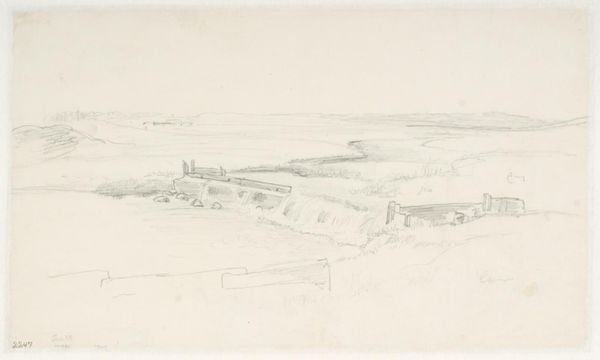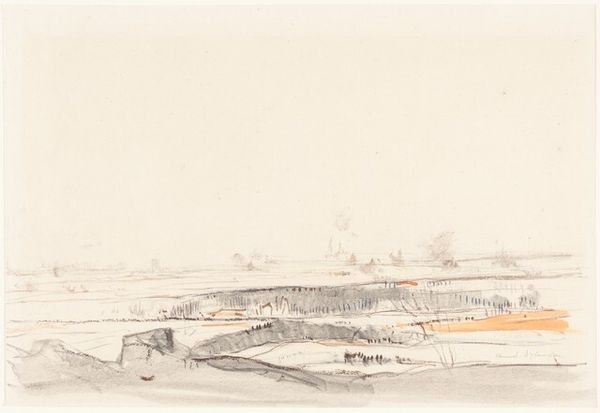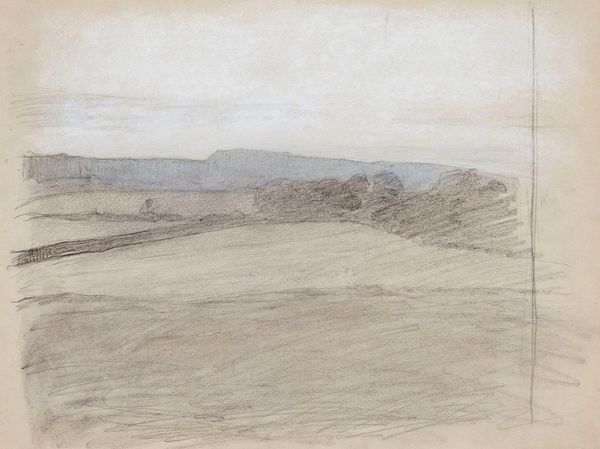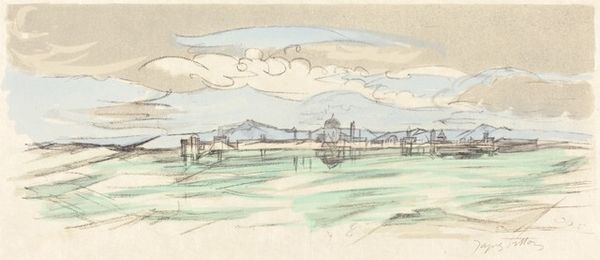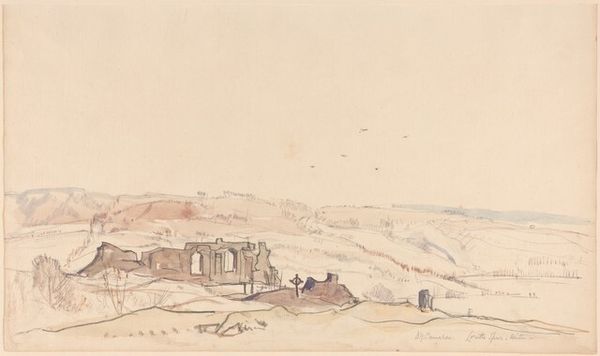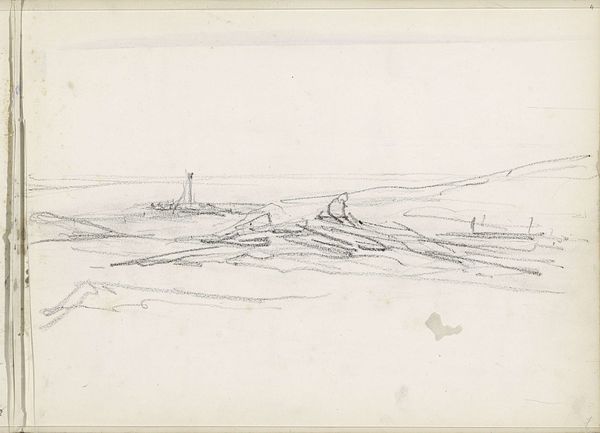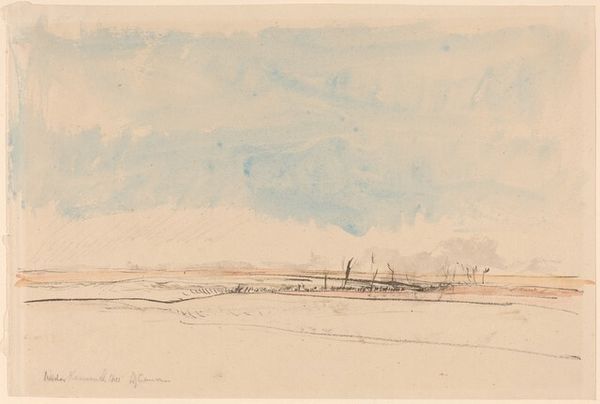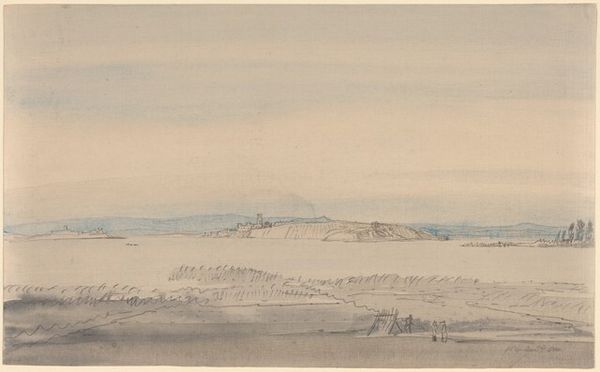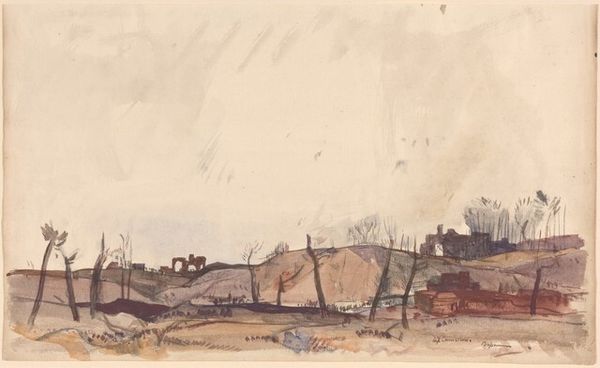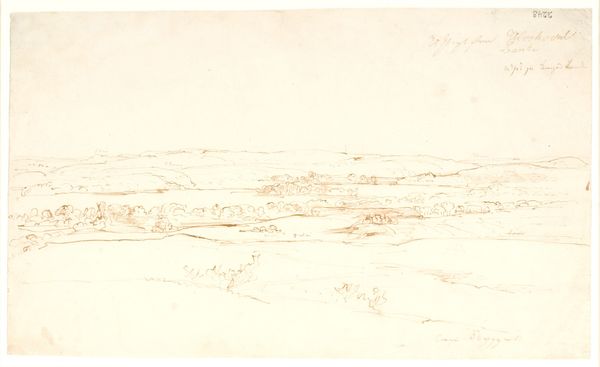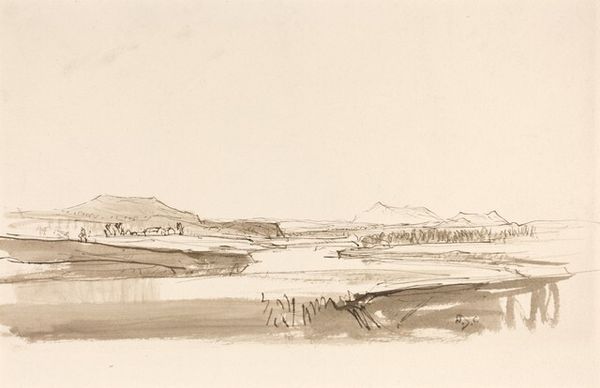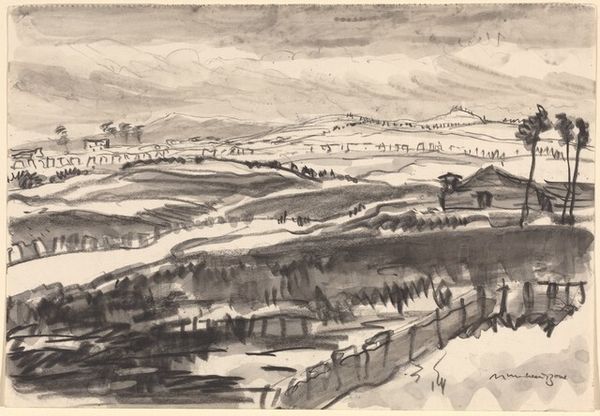
drawing, painting, watercolor
#
drawing
#
painting
#
landscape
#
watercolor
#
watercolor
#
realism
Dimensions: overall (approximate): 20.4 x 37.6 cm (8 1/16 x 14 13/16 in.)
Copyright: National Gallery of Art: CC0 1.0
Curator: Today we will examine David Young Cameron's watercolor and pencil drawing, "Near Cassel." Editor: My first impression is a sense of stillness. The color palette, dominated by pale blues and browns, contributes to a serene, almost melancholic mood. Curator: Absolutely. The horizontal composition further emphasizes this quietude. Notice how the layering of the sky mirrors the receding landscape, creating a sense of depth and endless space. The horizon line, though subtly defined, guides the eye to distant structures, mere suggestions on the page. Editor: I'm struck by the bareness of it. Cassel was the site of fierce fighting during both World Wars, situated in France. I wonder if this apparent emptiness reflects the social landscape after devastation. Curator: It's certainly a valid interpretation. The almost minimalist rendering prompts questions about absence and presence. The use of watercolor, traditionally associated with spontaneity, is here restrained. It makes me consider Cameron's meticulous control over a fluid medium. See how he uses dry brush strokes to suggest texture in the fields. Editor: Indeed. This strategic placement of dry brushwork acts as a disruption within the otherwise ethereal quality, and it almost evokes a topographical starkness in dialogue with its softness. Perhaps, Cameron engages here in a pictorial rhetoric concerning visibility and absence, making tangible the intangible emotional resonance embedded in this geographical place. Curator: I agree, and that interpretation further informs our understanding of landscape not simply as scenery, but as a repository of lived experience and the narratives held in abeyance beneath placid surfaces. Editor: Precisely. Art history can never be divorced from the reality in which an artist operates. Engaging both worlds gives new dimension to artworks, making the act of seeing also the labor of uncovering. Curator: I couldn’t agree more. Editor: Well said.
Comments
No comments
Be the first to comment and join the conversation on the ultimate creative platform.
